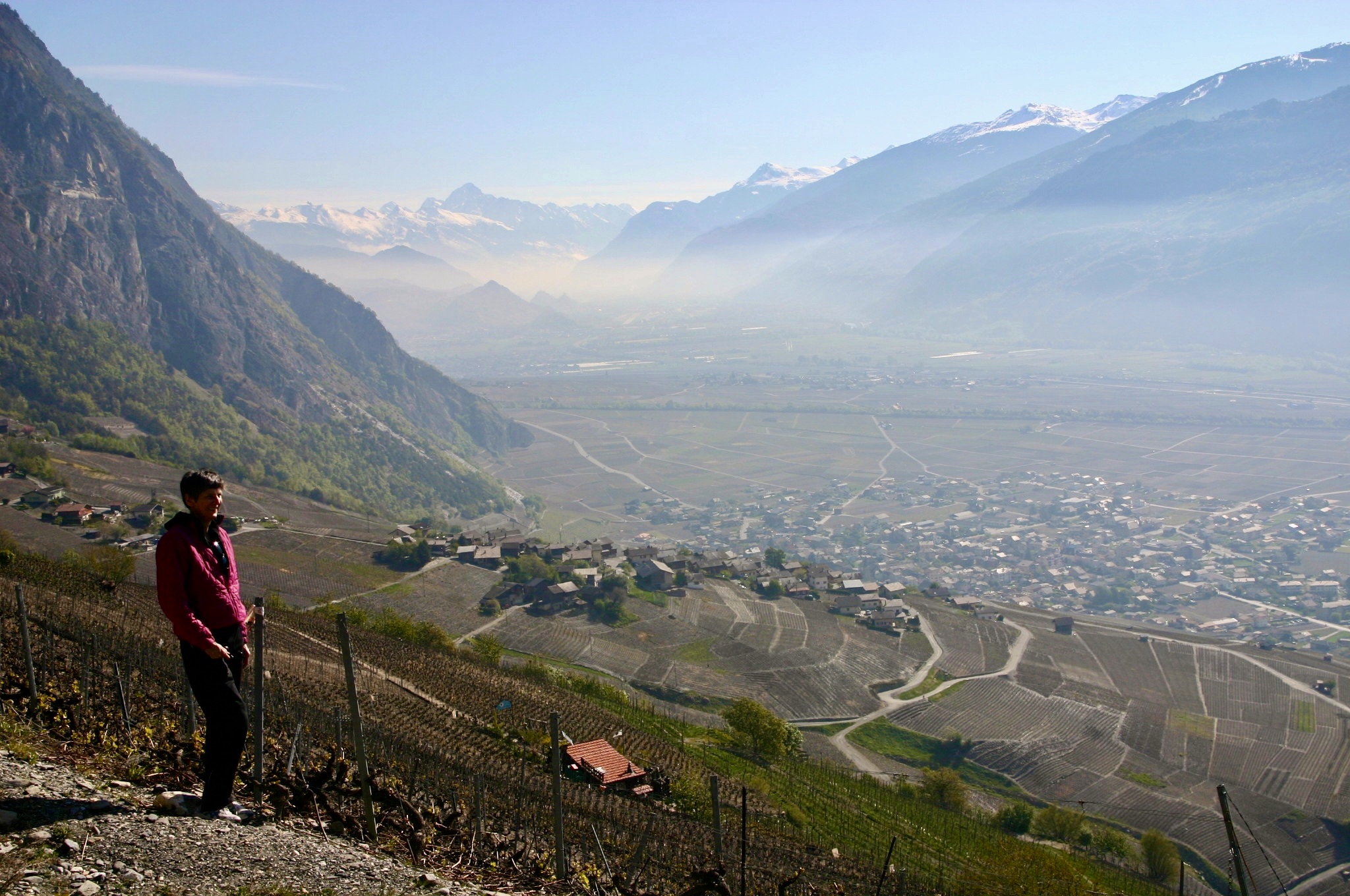 From a distance, the Swiss chalets dotting the Alps look uniform, but on closer inspection, you will see that each one has its own distinct personality and its own name. Native to the alpine region of Europe, these homes are traditionally made of wood with wide, sloping roofs that have eaves set at right angles to the front of the house.
From a distance, the Swiss chalets dotting the Alps look uniform, but on closer inspection, you will see that each one has its own distinct personality and its own name. Native to the alpine region of Europe, these homes are traditionally made of wood with wide, sloping roofs that have eaves set at right angles to the front of the house.
On an overnight jaunt to Ovronnaz, Gerald and I explore winding roads in the Valais region and hike through tiny villages like Les Mayens de Chamoson where homes cling precariously onto every nook and cranny.
Some chalets, dating back to the 1800s, which you have to duck to enter, are little more than sheds once used as seasonal homes for shepherds, sites for making cheese and butter when cows or sheep were brought up from the lowlands for summer grazing. Mazots, the small, windowless huts once used for storing valuables, can be seen near the eldest properties.
Engraved abov e the chalet’s front door is the date it was built. The old huts were remodeled to make mountain homes. As historical landmarks, any alteration must be approved by the Swiss government. Many have been restored, renovated and expanded, yet retain the original wood.
e the chalet’s front door is the date it was built. The old huts were remodeled to make mountain homes. As historical landmarks, any alteration must be approved by the Swiss government. Many have been restored, renovated and expanded, yet retain the original wood.
We traipse past chalets named after mountain wildlife, like Chalet de Chamois, Marmotte, Aigle, Bergeronnette, Merle, or local places like Le P’tit Cry, La Cordee. Other homes bear the family name, many ending in az typical of this area.
The biggest, most modern chalets are closed up, catering to rich folk who invade the region during ski season. However, the smaller, cozier places look lived in. Shutters have been flung open, duvets hang out to air, flowers bloom on window ledges, and Swiss flags wave in the wind.
I wish I could explore a few to see the decor, but the closest we come to the locals is seeing the old timers enjoying a pint at the bar in the evening or morning coffee at our hotel. A local couple comes in for Sunday breakfast. The Valaisan, a short, stout man with legs like tree stumps from climbing the rugged terrain, wears a plaid flannel shirt, dress pants, and suspenders with metal clasps designed in the shape of the eidelweiss flower. He chats with his wife in the Valaisan patois. Though this is technically the French speaking part of Switzerland, Gerald and I can’t understand a word they said.
Whereas Midwesterners head North to Wisconsin, Michigan and Minnesota to escape, the Swiss just head up. Chalets tucked in alpine meadows are so commonplace that there is a great migration upward every weekend. I could certainly see why. The closer one gets to heaven, the more spectacular the beauty, the purer the air, and the more profound the tranquility.

 One of the perks of living in Switzerland, a small country with such contrasting landscapes, is that within a few hours drive, you can enter what feels like another universe.
One of the perks of living in Switzerland, a small country with such contrasting landscapes, is that within a few hours drive, you can enter what feels like another universe.
 the mineral rich baths in one of the three pools with water at various temperature levels. Naturally, I like it hot, so I spent my time in the
the mineral rich baths in one of the three pools with water at various temperature levels. Naturally, I like it hot, so I spent my time in the 
